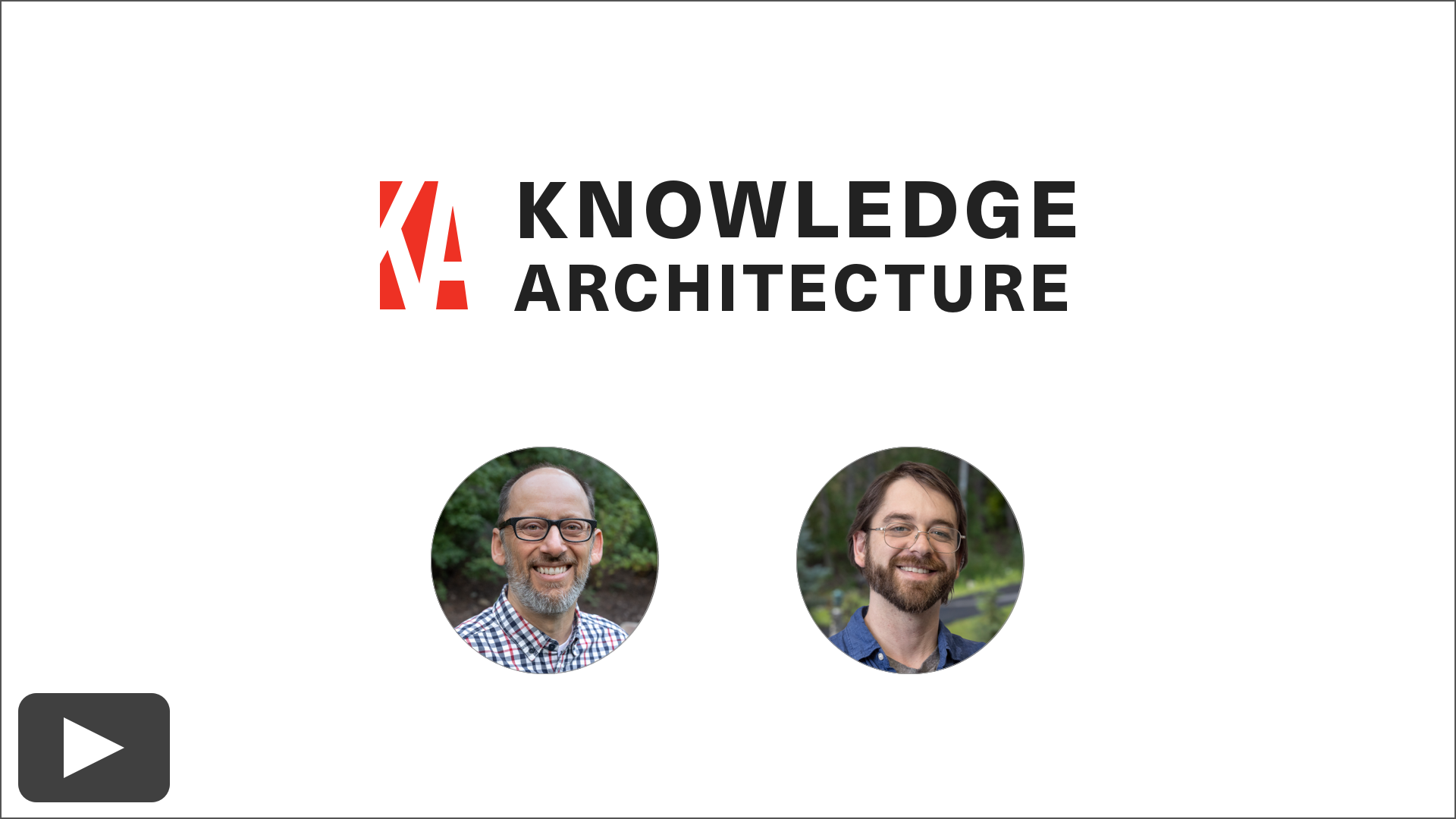Featured Guests
Kathryn Whitenton, Director of Digital Strategy at Nielsen Norman Group
Page Laubheimer, Senior User Experience Specialist at Nielsen Norman Group
Webinar Summary
In this month’s Office Hours, Nielsen Norman Group (NN/g) and Knowledge Architecture share insights based on our recent study of over 120 Synthesis intranets. We discuss patterns and pitfalls of intranet navigation, share best practices for building effective and intuitive intranet navigation, and introduce you to a process for validating proposed changes to intranet navigation.
Webinar Timeline
00:18 Introductions
00:18 Common Intranet Navigation Questions from KA Clients
03:32 Introduction to the Research Project & Team
08:36 Intranet Navigation Best Practices
09:08 Introduction to NN/g
10:40 Information Architecture (IA) 101: Mental Models
12:07 Intranet IA: Most Common Problems
13:10 User-Centered Design
14:16 Example: Department vs. User Centered Intranet Design
16:00 Mental Expectations are not Logical Taxonomies
17:30 Asymmetric Structure is OK
19:18 Polyhierarchy is OK
20:24 Overview: Navigation Best Practices
20:45 1. High Visibility for Key Categories
21:36 … Example: Common Tier 1 Categories
22:05 2. Distinct Categories
22:52 … Example: Codes vs Standards
23:44 3. Familiar, Clear Terminology
24:35 … Example: [Firmname] University
25:06 4. Short, Front-Loaded Labels
26:05 … Example: Professional Licensure vs Licensure
26:38 Tree Testing
27:30 Accordion Menu and User Tasks
29:22 The Research Process: Live Sessions & Data Collection
30:38 IA Trees Assessed
32:10 … Tree A — Broad
34:08 … Tree B — Narrow
35:24 … Tree C — Medium-Broad
36:28 … Tree D — Broad with alternate working
36:46 Video: Tree Testing Task
37:33 Answers to Key Questions
37:50 HR, Marketing & IT
39:58 Administrative Category / Office
42:13 General Resources vs by Discipline
45:25 Filters and Cross References
46:11 Where Users Looked for Learning Content
47:30 Learning Content
49:40 First Click Data for Learning Content Task
50:46 Overlap & Over-Specificity in Tier 3
52:08 Broad vs Narrow Tier 1
54:40 Q: How broad is too broad?
57:20 Q: Was there a difference between the two broad options?
58:20 Recommendations
58:55 1. Organize content by topic
59:28 2. Call your administrative category “Office”
1:00:21 3. Clarity over brevity/cleverness for category names
1:01:38 4. Go with a broad and shallow architecture
1:02:10 5. Don’t get overly specific in lower levels
1:02:53 Recommended Default Navigation
1:01:04 … Projects & Practice Category
01:07:27 … Office, About Us, Learning
1:09:04 Label Names to Avoid
1:09:11 … Firmwide
1:10:01 … Design Technology
1:10:32 … Project Delivery
1:10:58 … Practice Groups
1:11:20 … Business Services
1:12:08 Research Protocol
1:12:38 Optimal Workshop & Treejack
1:13:04 Create User Tasks
1:14:47 Find 50+ Participants Per Task
1:15:14 11 Tasks Used by NN/g
1:15:27 Analysis of Results
1:16:09 Visualization: Overall Metrics
1:17:06 Visualization: Pie Tree
1:17:46 Matrix: Where Users Looked
Q+A
1:18:55 Q: Where does “accounting” (forms, etc) fit in best?
1:21:12 Q: Any recommendations on where to put design conversations and inspiration?
1:23:44 Q: Is there a best practice with regard to how often you can/should make changes to your intranet navigation?
1:26:15 Q: Any thoughts on where programs and conversations related to professional development can be organized?
Read the Collaborative Notes
Members of our team and the KA Advance community took collaborative notes during this webinar using Google Docs. Collaborative note-taking helped us summarize key takeaways, collect related links, and will provide us with a quick reference when we return to this topic in the future. We've found the notes quite useful so far and hope you will as well.
Review the Session Slides
Want to take a closer look at NN/g’s presentation slides? Check them out here.
About Office Hours
Office Hours is 60 minutes of news, stories, and Q+A with Susan, Sarah, Chris, Zucu, and special guests from the KA Advance community. You can watch recordings of past Office Hours webinars here.






